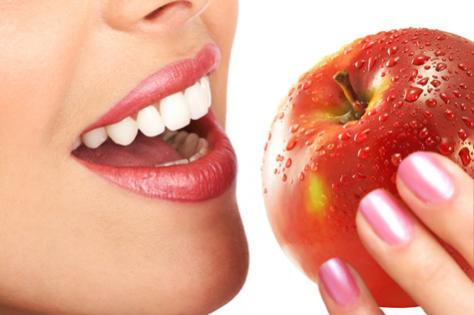It may surprise you just how many dental myths are accepted as truth. Sometimes we choose to believe these myths rather than find out the truth and, after a while, they can become so ingrained in our culture that it's hard to tell fact from fiction.
But when it comes to your dental health, having false information can be harmful. It’s important to consult with a trained professional to ensure you’ve got the correct information when it comes to your teeth.
There are some very common myths that still abound when it comes to our teeth. Some are more obvious than others, but my patients are often surprised to hear that the six so-called 'facts' below are actually fiction.
MYTH 1: The more sugar you eat, the worse for your teeth
Many of us can recall being told that sugar will rot our teeth - but did you know that the amount of sugar you eat is not the deciding factor in tooth decay?
The bacteria in your mouth feed on carbohydrates, like sugar, and produce an acid that eats away at the enamel of your teeth.
The longer the sugar is in your mouth and the more bacteria and plaque you have around your teeth, the longer the bacteria can feed and produce acid, and the longer the acid can work on the enamel.
In other words, it's not about the amount of sugar you eat, it's about how long the sugar is in contact with your teeth.
This means that eating chocolate and then immediately brushing your teeth is less harmful to your dental health than eating chocolate and not brushing.
Slowly dissolving lollies and soft sticky and chewy lollies are also a bad idea, as is frequent sipping on sugary drinks all day, since both situations allow sugar to hang around your teeth for a long time and increase the acid levels in your mouth.
The moral of this story is that you can enjoy sweets – subject to other health considerations - but make sure you brush.
MYTH 2: Wisdom teeth cause crowding of your front teeth
The wisdom tooth myth proposes that erupting wisdom teeth push against the lower jaw, forcing the back teeth forward and crowding the front incisor teeth. This is the explanation most commonly voiced by dentists and patients alike, but it isn’t entirely accurate.
The wisdom teeth concept is an attractive one because it implies that dentists can prevent incisor crowding simply by extracting third molars before crowding develops.
Unfortunately, research has shown that the problem is not that simple. Although there are valid reasons for extracting the third molars, preventing lower incisor crowding does not appear to be one of them.
MYTH 3: Bleaching weakens teeth
Some people are concerned that using bleaching products on their teeth can be harmful or that it may weaken the teeth, but there isn’t much of a basis behind this fear.
Most of us would like our teeth to be whiter, but many people are hesitant to use bleaching products because of the myths that abound. In reality, bleaching products are generally harmless as long as they are used according to directions.
While excessive and regular bleaching may affect the appearance of the tooth, it will not alter or weaken the tooth.
Side effects of too much bleaching include temporary tooth sensitivity and irritated gums, but there's no need to fear that using bleaching products will weaken your teeth.
MYTH 4: Breastfeeding reduces the calcium in your teeth
This myth regularly does the rounds on parenting blogs across the country.
Pregnancy does not automatically damage your teeth.
If the mother’s intake of calcium is inadequate during pregnancy, her bones – not her teeth – will provide the calcium her growing baby needs. Once teeth are formed, there is no mechanism for the reabsorption of calcium from teeth.
However, the demands of pregnancy can lead to particular dental problems in some women.
The hormones associated with pregnancy can make some women susceptible to gum problems including gingivitis (gum inflammation). This is more likely to occur during the second trimester. Symptoms include swelling of the gums and bleeding, particularly during brushing and flossing between teeth.
MYTH 5: If your gums are bleeding, avoid the area
On the surface this myth might make sense – if your gums are bleeding, leave them alone until they heal – but in fact, the opposite is true.
When your gums bleed, it is a sign that the bacteria and food debris collected along your gum line has irritated and inflamed your gums. You need to brush bleeding areas more thoroughly and carefully if you want the bleeding to stop. The key is to brush and floss regularly, gently and with a soft tooth brush.
Most dentists recommend brushing your teeth two or three times a day, but brushing more than that is unnecessary and could actually damage or irritate the gums and wear away tooth enamel, especially if you're brushing too hard.
Persistent bleeding may be a sign of a more serious problems and your dentist should be able to advise you.
MYTH 6: An aspirin directly on a tooth will relieve pain
Is putting the pain reliever next to your aching tooth better than swallowing it?
This one's an old at-home remedy, and it's completely false - you should never put aspirin directly on or near an aching tooth. After all, you wouldn't put aspirin on your forehead if you had a headache, would you?
The only safe and effective way to take an aspirin tablet is to swallow it. In fact, placing aspirin directly on the aching tooth or your gums can cause an acidic chemical burn to your gums and lips.
* * *
For further information about teeth, visit www.aboutyourteeth.com.au



















__small.png)










